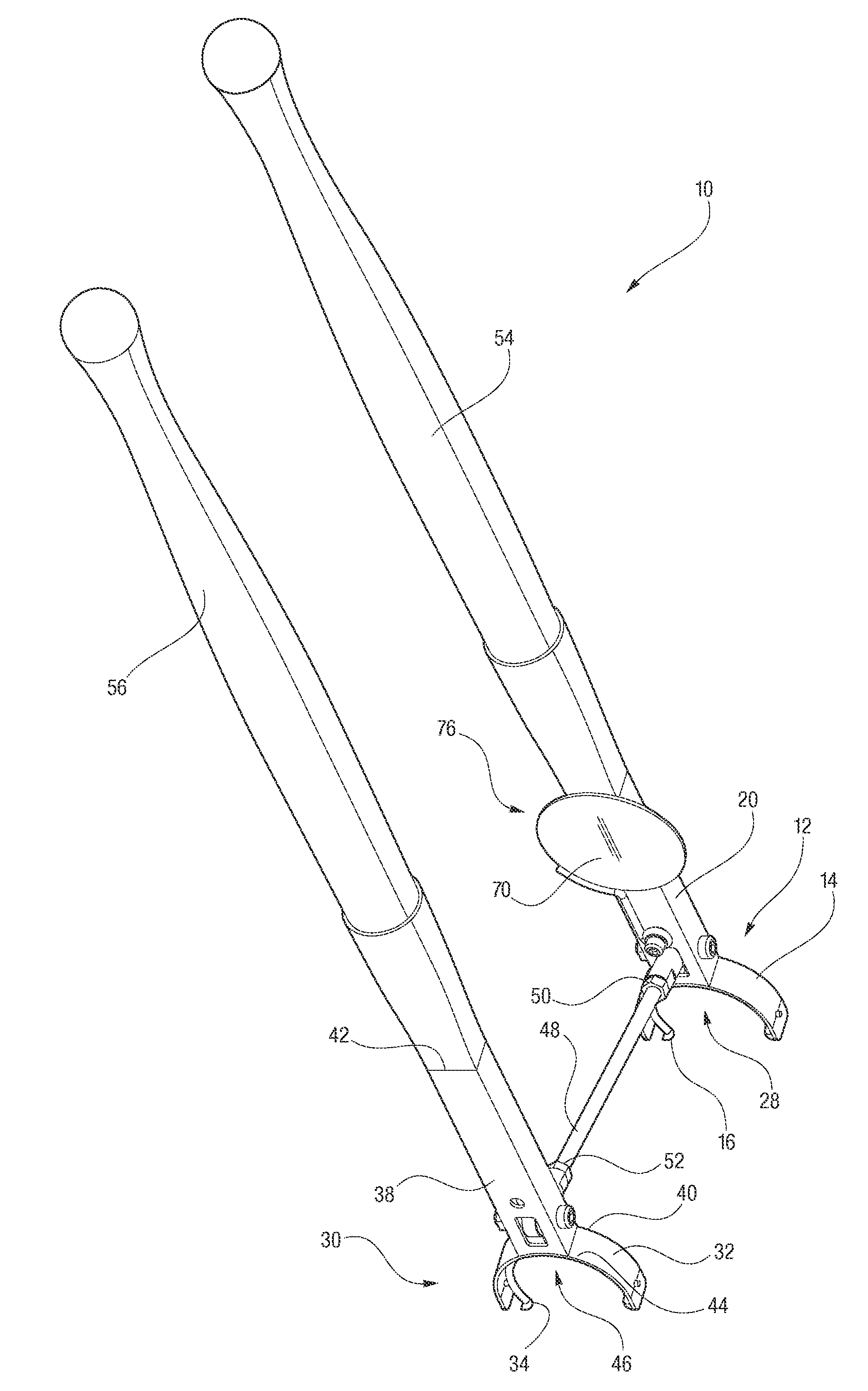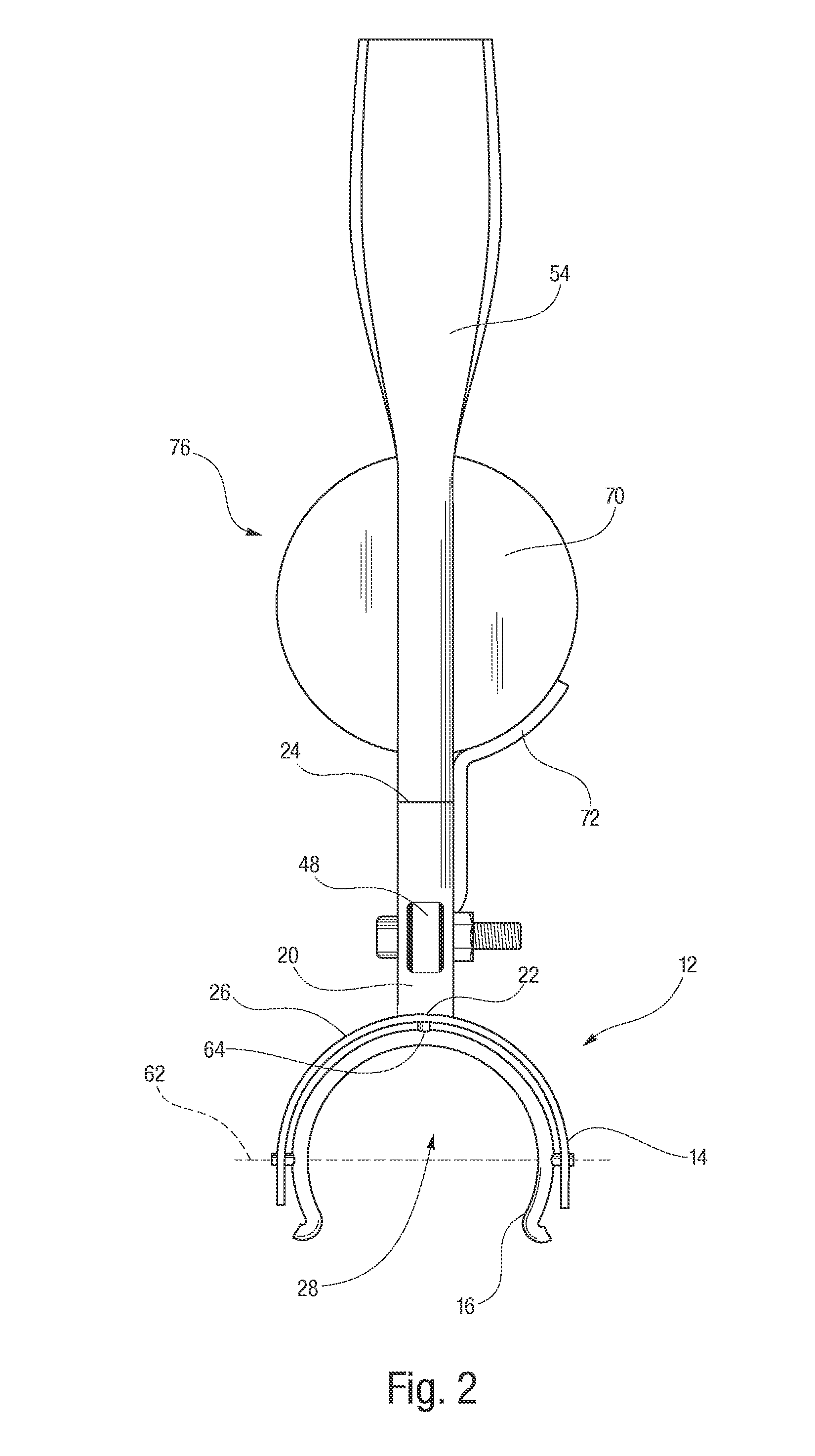Pipe joining tool
a pipe and tool technology, applied in the field of pipe joining tools, can solve the problems of substantial labor costs, substantial labor costs in terms of labor hours, and substantial risks of disrupting the trench, and achieve the effects of no damage to the pipes, no clamping flexion, and no friction applied by the clamping to the pipes
- Summary
- Abstract
- Description
- Claims
- Application Information
AI Technical Summary
Benefits of technology
Problems solved by technology
Method used
Image
Examples
Embodiment Construction
[0040]Referring to the drawings in detail a perspective view of a pipe joining tool of the present disclosure is shown in FIG. 1 and is generally designated by the reference numeral 10. The pipe joining tool 10 includes a first pipe securing head 12 having a first downward facing C-shaped frame 14 and a first pipe securing clamp 16 (seen best in FIG. 2) secured within the first downward facing C-shaped frame 14 for selectively and detachably securing the first pipe securing head 12 to a first pipe 18, shown in FIG. 4. A first neck 20 of the first pipe securing head 12 has a bottom end 22 and an opposed top end 24, wherein the bottom end 22 is secured to a central portion 26 of the first downward facing C-shaped frame 14. The top end 24 of the neck 20 extends away from the first frame 14 in a direction away from a first central opening 28 defined by the first downward facing C-shaped frame 14.
[0041]The pipe joining tool 10 also includes a second pipe securing head 30 (shown in FIG. 1...
PUM
| Property | Measurement | Unit |
|---|---|---|
| outer circumference | aaaaa | aaaaa |
| outer circumference | aaaaa | aaaaa |
| circumference | aaaaa | aaaaa |
Abstract
Description
Claims
Application Information
 Login to View More
Login to View More - R&D
- Intellectual Property
- Life Sciences
- Materials
- Tech Scout
- Unparalleled Data Quality
- Higher Quality Content
- 60% Fewer Hallucinations
Browse by: Latest US Patents, China's latest patents, Technical Efficacy Thesaurus, Application Domain, Technology Topic, Popular Technical Reports.
© 2025 PatSnap. All rights reserved.Legal|Privacy policy|Modern Slavery Act Transparency Statement|Sitemap|About US| Contact US: help@patsnap.com



